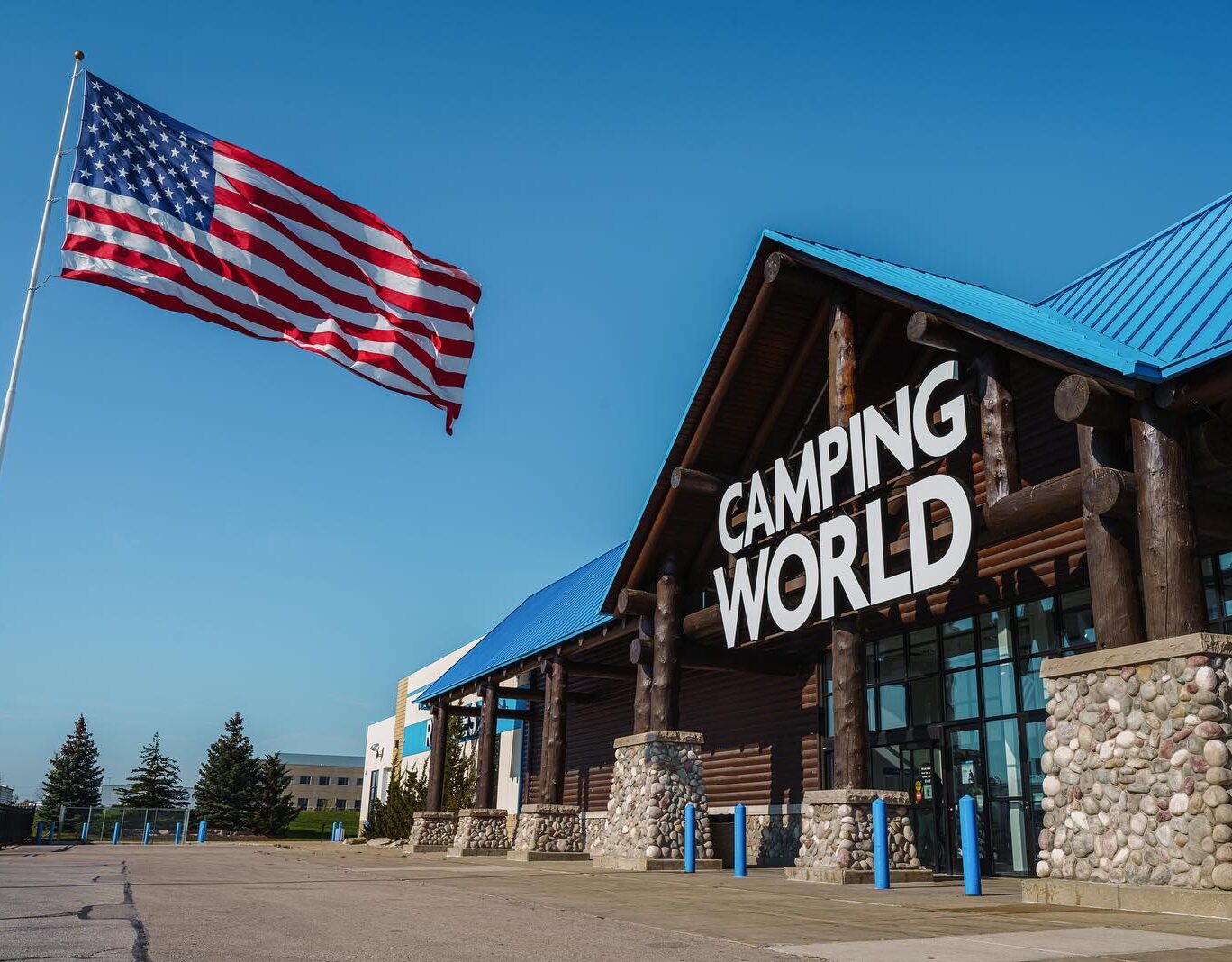Seeking Alpha Reviews Camping World Financials

The following is a report by Sandpiper Investment Research published by Seeking Alpha, a crowd-sourced content service for financial market news.
Camping World, as the name might imply, specializes in selling RVs, camping gear and related outdoor products. It operates as both a retailer and a service provider for RV enthusiasts across the United States. Founded by Marcus Lemonis, Camping World has become one of the largest RV dealerships in the country, offering a wide range of RVs, from motorhomes to travel trailers, as well as accessories and camping supplies. The company also provides maintenance and repair services for RVs, making it a comprehensive resource for both new and experienced RV owners.
Camping World has over 100 dealership locations, making it the largest player in the market for RV sales and supplies. Operating in a fragmented industry, the company has a competitive advantage whereby its scale provides it with several benefits over smaller peers. This includes a wider assortment of inventory, better gross margins (even with volume discounts), and more favorable terms with lenders.
Shares of Camping World have been trading close to 52-week lows, providing a disappointing return of 29% year to date for investors. Over the last 10 years, shares are essentially flat, having delivered a total return of 191%, most of which came from the company’s 2.7% dividend. Compared to the S&P500’s return of -20% over the same period, Camping World’s shares have underperformed significantly.
When looking at the financial performance of Camping World over time, the company has growth in revenues and EBITDA at CAGRs of 10.2% and 6.7%, respectively. In the last five years, the company has exhibited a decelerating growth rate, with revenues and EBITDA growing at 5.4% and 3.2%, respectively (source: S&P Capital IQ). With the revenue CAGR higher than the EBITDA CAGR for both periods, this shows that Camping World hasn’t been able to extract margin expansion consistently over time.
So, what’s going on? One of the biggest challenges is that the camping industry in general is highly cyclical. After all, you’re not going to go out and buy an RV if you’ve lost your job in a recession or if food inflation is hitting your wallet. Thus, Camping World does well when the economy does well (disposable incomes rise) and it does poorly when the economy suffers (disposable incomes fall).
Another factor is that there was a strong pull-forward of demand during the pandemic era, when people were at home (or camping!) and wanted to spend money. Now, it’s a buyers’ market for RVs as new RV sales fell roughly 20% in 2023, according to a dealer association in Canada. While rentals are still strong, there’s still a lot of pre-owned inventory on dealership lots right now and demand has been soft for new RVs.
In the U.S., demand is slightly better, but these are still large-dollar items for individuals and families, with a small pop-up, tow-behind trailer costing between $12,000 to $15,000, all the way up to others that go for $250,000 and higher for a motorhome or luxury offering. With higher interest rates and the cost of borrowing going up, consumers are more sensitive to the overall price tag of recreational vehicles, making careful financial planning and decision-making increasingly crucial.
Recent Results
When looking at the latest Q1 results for Camping World, the company reported revenue of $1.36 billion, down 8.3% year over year and missing estimates by $62.5 million. Earnings per share clocked in at -$0.38, missing estimates by a penny.
On the earnings call, management noted that new RV units delivered rose 21.35 on a year-over-year basis. While revenue missed expectations with softer pricing on new RVs (The revenue miss vs. our model was largely driven by softer pricing in 1Q for both new RVs (-16.4% year over year), I think this data point illustrates that much of the inventory is being sold through now.
Q1 Results
Based on commentary from management, about 90% of CWH’s new RV inventory is 2024 model years, so inventory has been right sized now to correspond to revenue. In addition, with new RV units sold increasing, I think it’s possible that the revenue declines could be behind us as prices are guided to track more sequentially flat from here. In my view, the combination of volume increases and moderated pricing could also mean better EBITDA growth in the quarters ahead.
On EBITDA, adjusted EBITDA came in at $8.2 million, mostly as a result of used vehicle gross profit pressure. Overall, the EBITDA isn’t so meaningful this quarter, but normalizing a mid-year EBITDA margin on current revenues makes the calculus around the current revenues not look so bad. Management has a goal of 30% adjusted EBITDA growth goal for the year, most of which will be realized in the back half of the year.
Finally, on the earnings call, management also took the opportunity to announce that the company was divesting the RV furniture manufacturing business, expected to close sometime in Q2. This should have about a $30 million impact for FY’24 but will be accretive to the segment’s margin, given the better margin profile of the existing operations. I would expect the company isn’t done with these kinds of deals. Last quarter, the company announced it was considering strategic alternatives for the Good Sam business, including allowing the segment to expand its operations into the boating and powersports end-markets as well as the potential sale of the business. While a potential divestiture isn’t yet in the works, and it’s too early to say what they will do, they are encouraged by the strong interest seen from potential buyers to date.
While Camping World may look expensive today, I don’t believe the valuation is particularly rich. Investors seem to have very low expectations given the low valuation, even in spite of potentially bottoming RV volumes industry wide. While pricing remains soft, Camping World is managing to grow volumes, something I believe signifies a turnround and the end to the pull-forward effect we saw during the pandemic. With the potential to rapidly improve EBITDA if management is able to achieve its 30% margin target for the year, I rate shares as a ‘buy’, and would consider initiating a position on any weakness.
Read the full report published by Seeking Alpha here.



